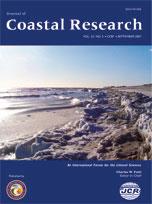From November 2 to 5, 1996, an intense extratropical cyclone was near the National Data Buoy Center buoy 46035 in the Bering Sea. At the storm's extremes, the buoy measured minimum sea-level pressure (= 966.1 mbar), 10 m wind speed (= 28.2 m/s), peak gust (= 38.9 m/s), significant wave height (= 15.4 m), and peak period (= 16.7 s). During this period, 41 hourly observations were recorded when the waves were not fully developed; these records are the subject of our detailed analysis. It is shown that the wind–pressure relation was governed by the cyclostrophic equation; stability was neutral (i.e., the logarithmic wind profile law is useful); the relation between dimensionless wave height and period as normalized by the wind speed and the friction velocity follows the formulas found in the literature. Further determination of the friction velocity using the gust factor concept is successful to incorporate both tropical and extratropical cyclones.
How to translate text using browser tools
1 September 2007
Characteristics of Wind–Wave Interaction During an Intense Extratropical Cyclogenesis
S. A. Hsu,
Brian W. Blanchard
ACCESS THE FULL ARTICLE

Journal of Coastal Research
Vol. 23 • No. 5
September 2007
Vol. 23 • No. 5
September 2007
Bering Sea
Bowen ratio
buoyancy length
drag coefficient
friction velocity
gust factor
roughness parameter




